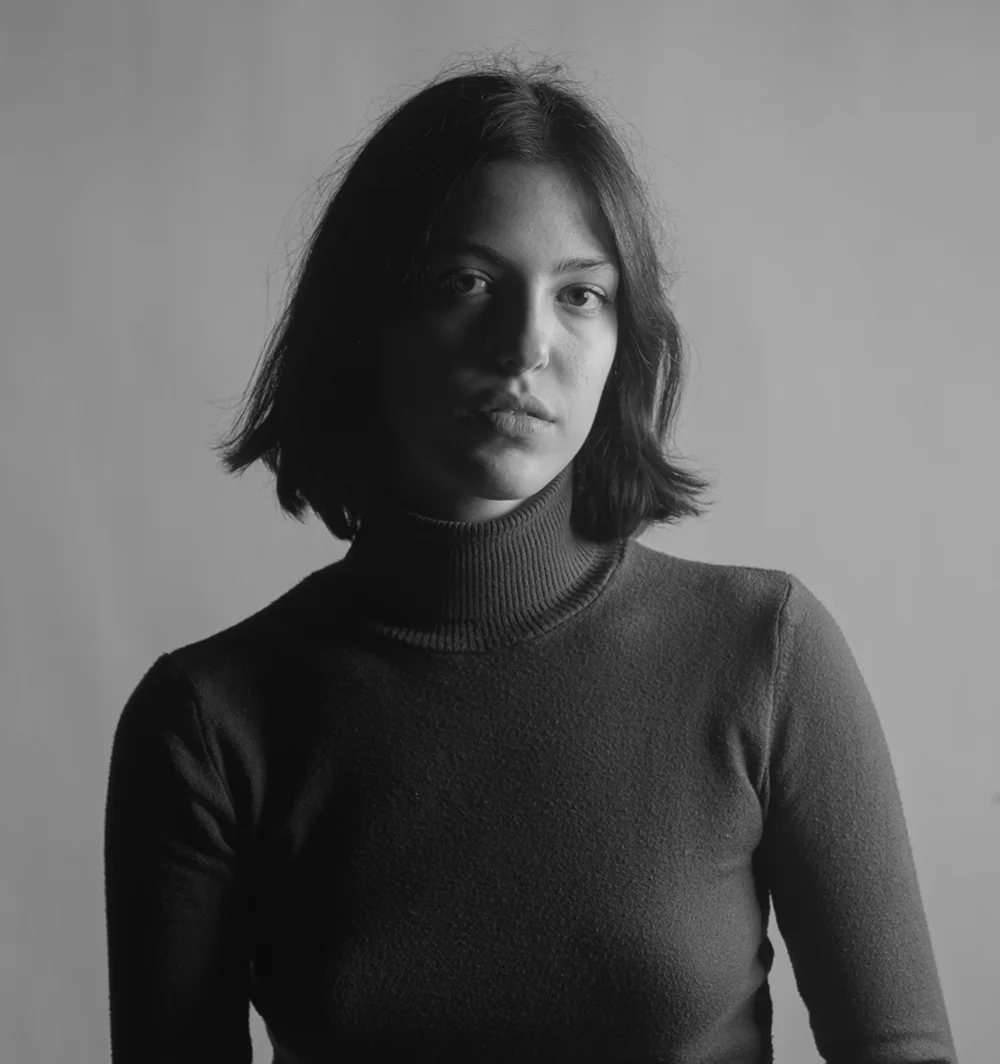Athina Alkini is a visual artist, born in Athens, Greece in 2004. She is currently studying in the Athens School of Fine Arts. Alkini utilizes various media in her artistic practice such as photography and sculpting.
She has participated in art exhibitions in Greece and Malta, and has been awarded by the Museum of Cycladic Art in Athens.
Her photography series MAMA has been exhibited at the Visual Arts International Festival of Thessaloniki in 2024.
In 2025, Alkini was selected for the ΕΚΕΙΝΕΣ: The Women of Greek Photography exhibition by Photometria Photography Center and Photometria Festival, on the occasion of the International Women’s Day, with her photography series MAMA.
Since 2023, she has been writing and editing cultural and art related content for the Athens Center for Indian and Indo-Hellenic Studies of the Hellenic-Indian Society for Culture and Development.
In her conceptual photography, Alkini explores scenarios linked to emotional states and interpersonal relationships.
About the Series: MAMA
MAMA is a series of photographs referring to a mother-daughter relationship through the lens of loss.
This series is based on the duality of that bond; profound love and immense sorrow. It aims to express the incomplete restoration of moments and images of childhood time and space, combining the contexts of motherhood and loss. Alkini utilizes specific objects, places and people to form memory-like scenarios, based on her journey of reflecting on the relationship and reconnecting with her mother in the present.
Every image in this series corresponds to a specific memory or emotion, functioning as part of a diptych: the past and present of this relationship. The visual elements used are deeply personal, but also serve as symbols, linked to loss, grief, childhood, and family. Alkini strives for the series to become part of a collective memory and shared journey, inviting viewers to reflect on their own connections to love and loss.
Awarded Photographer of the Week - Week 12
